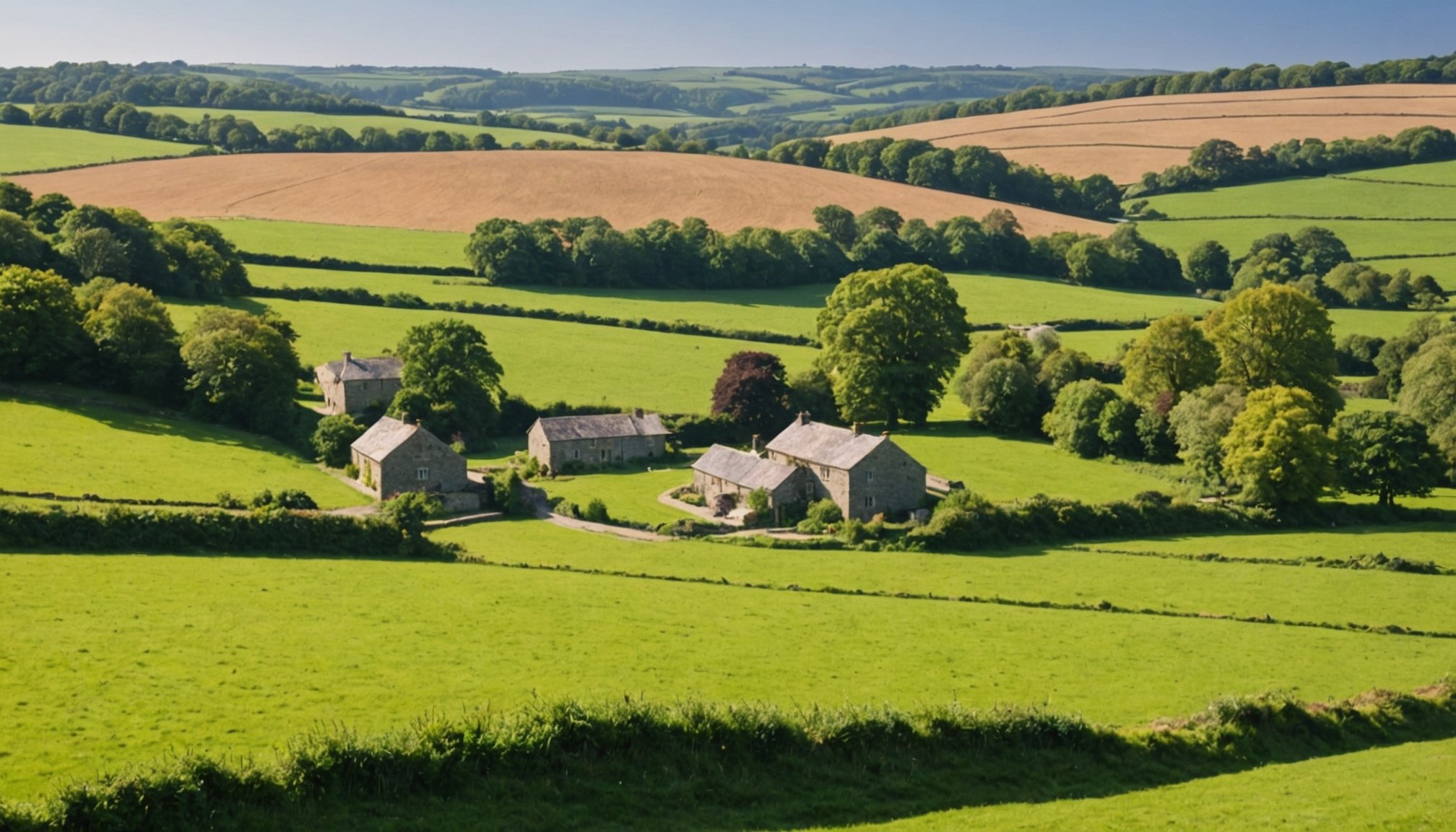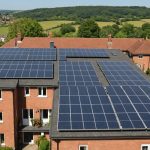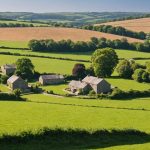Key Environmental Factors in Rural Property Purchase
When considering the purchase of a rural property in places like Cornwall, there are several crucial environmental factors to keep in mind. These factors significantly impact the property value and can influence your future enjoyment and use of the property.
Importance of Sustainability in Land Use
Sustainability should be paramount when evaluating a rural property. Assessing how land can be used without depleting resources ensures long-term viability. Check local laws and environmental regulations, as these govern activities like farming or forestry, affecting both the land’s ecological health and your plans.
A voir aussi : Essential Guide: How to Verify a Lead-Free Property in London Before You Buy
Impact of Environmental Conditions
Climate impacts, such as rainfall patterns and wind, shape agricultural potential, influence energy availability, and determine natural disaster risks like flooding. Soil quality is another key element, as it affects productivity for any agricultural ventures you may consider. Poor environmental conditions can drastically reduce property value over time.
Lastly, always regard the natural biodiversity of a rural area. Preserving existing ecosystems not only supports the environment but can also enhance the property’s value and community standing, making it a smarter investment for the green-conscious buyer.
A voir aussi : Essential Considerations for Purchasing a Dream Farmhouse in the Picturesque Welsh Countryside
Soil Quality and Land Use in Cornwall
Assessing soil quality is vital for determining the agricultural viability of land in Cornwall. Cornish soil must be evaluated for nutrient levels, pH balance, and texture. These factors influence crop yield and suitability for specific farming practices. By maintaining a healthy soil profile, local farmers can improve productivity and sustainability.
Cornwall’s agricultural land use is subject to regulations and zoning laws to preserve the rural landscape and promote sustainable farming. Regulations dictate what activities are permissible within certain zones, and these can vary widely depending on the soil’s capacity to support different agricultural practices. Farmers need to understand these legal frameworks to ensure compliance and optimise land use.
The importance of soil conservation practices in rural areas like Cornwall cannot be overstated. Techniques such as crop rotation, cover cropping, and reduced tillage are essential for maintaining soil integrity. These practices help prevent erosion, retain moisture, and enhance soil fertility over time. By prioritising these methods, farmers contribute to environmental preservation while supporting long-term agricultural success.
Ultimately, addressing soil quality through well-informed land use and robust conservation measures is key to sustaining agricultural operations in Cornwall.
Water Access and Management
Gaining water access is crucial for any agricultural or industrial activity, but evaluating water sources and access rights is often complex. Identifying reliable sources involves thorough assessment of both surface waters, like rivers or lakes, and groundwater. However, access to these resources is subject to regulatory approvals, requiring users to navigate legal frameworks. Conflicts may arise over shared sources, thus resolving such issues involves understanding specific access rights granted under local laws.
Irrigation techniques are pivotal for sustainable water use. Efficient methods, such as drip and sprinkler systems, minimize water waste. However, the choice of technique hinges on resource availability and crop needs. Innovations in sensor technology further optimise irrigation, ensuring water is delivered precisely where needed.
Local resources and regulations significantly influence water management practices. Each region imposes guidelines tailored to their ecological necessities. These may include quotas, restrictions during droughts, or mandatory conservation measures. Managers are tasked with not only adhering to these regulations but also devising strategies for long-term resource sustainability. This requires a balanced approach, promoting economic growth without sacrificing environmental health. By integrating advanced technology and sustainable practices, effective water resource management can be achieved, benefiting all stakeholders involved.
Wildlife and Biodiversity Considerations
When considering a property purchase, it’s crucial to assess its potential impact on local wildlife. Understanding the Wildlife Impact is vital. This involves examining how the presence of properties might affect natural habitats. It includes the disruption of feeding and breeding grounds or changes in migration patterns. Disturbing these elements might significantly affect local wildlife populations.
Preserving biodiversity stands as a core principle, especially in rural regions. Biodiversity ensures ecosystem resilience, where a variety of species contribute to crucial processes. They also provide ecosystem services like pollination, water purification, and soil fertility. Protecting biodiversity fosters a healthier, more sustainable environment benefitting both human inhabitants and wildlife.
Supporting local conservation efforts is fundamental. Numerous organizations exist, aiming to mitigate the negative effects of urbanization and development on ecosystems. Engaging with these groups can promote effective conservation practices. Property owners can contribute by implementing wildlife-friendly features, such as planting native vegetation which offers food and shelter to native species.
In conclusion, a careful consideration of Wildlife Impact and Biodiversity is vital in maintaining the ecological integrity of rural areas. Supporting local conservation initiatives ensures responsible property ownership and fosters harmonious human-wildlife coexistence.
Local Environmental Laws and Regulations
When considering property purchase, being informed about the environmental laws in Cornwall is essential. Regulations can directly affect your ability to buy and develop property. The Cornwall Regulations cover everything from land use to agricultural practices, designed to preserve the county’s natural beauty and environment.
One crucial aspect is conducting environmental assessments, which evaluate potential environmental impacts of land developments. Before you purchase, understanding these assessments is vital. Assessments can reveal issues such as contaminated land or potential flood risks, which might affect property value or development possibilities. Failing to understand these implications can lead to unforeseen challenges and costs later on.
For a smoother experience, leveraging resources to navigate these complexities is wise. Cornwall’s local government and environmental agencies offer guidelines, which can be indispensable tools in ensuring compliance with Cornwall Regulations. Similarly, hiring local experts familiar with environmental laws can save you time and stress.
Property purchases in Cornwall, or any locale with strict environmental controls, necessitate a thorough understanding of relevant laws and procedures. By being proactive and informed, buyers can make confident, compliant decisions.
Potential Hazards and Risk Assessment
When considering a property purchase in rural areas, identifying potential hazards is paramount. This includes evaluating risks such as flooding, wildfire exposure, or soil erosion. Environmental hazards can significantly impact property safety and value. Conducting thorough risk assessments ensures that you are informed about the vulnerabilities specific to a location, allowing you to make sound decisions.
A comprehensive risk assessment should be a priority for any prospective buyer. This process involves examining local climate data, proximity to natural disaster zones, and historical incidents in the region. By understanding these potential dangers, you are better equipped to mitigate them effectively, whether through preventative measures or adjustments in property choice.
Resources are available to aid in the evaluation of environmental hazards before purchasing a property. These include government databases, environmental surveys, and consulting with local experts who have in-depth knowledge of the area’s historical hazard patterns. Engaging with these resources can offer invaluable insights, aligning safety with investment goals.
Remember, ensuring property safety isn’t just about immediate concerns; it also lays the groundwork for peace of mind and long-term security. Engage with relevant tools and data to prioritise safety and make informed choices regarding your future home.
Assessing Ecological Footprint of Property
Understanding a property’s ecological footprint is crucial for promoting environmental stewardship and minimizing ecological impacts. One widely-used methodology involves calculating the ecological footprint by assessing the energy, water, and material resources consumed, alongside waste outputs. Advanced practices may even consider the biodiversity and carbon sequestration potential of the land.
To effectively integrate sustainable practices into property development, prioritizing energy efficiency and selecting materials that are renewable or recycled can significantly reduce a property’s impact. Consider implementing efficient water management systems, like rainwater harvesting, to sustainably manage water consumption.
For those seeking further expertise, resources such as the Global Footprint Network provide comprehensive tools and databases for estimating and improving the ecological footprint. Engaging with these will offer insights into best practices in eco-friendly property management.
Key actions for developers include:
- Evaluating and applying bioclimatic architecture.
- Using passive solar designs to harness natural daylight and heating.
- Leveraging green roofing and vertical gardens for biodiversity.
Integrating these strategies into property planning can significantly curtail the ecological footprint, supporting a cleaner, healthier planet. Empowering stakeholders with this approach fosters a culture of accountability and innovation in resource management.
Resources for Further Research in Cornwall
For those looking to delve deeper into environmental research resources in Cornwall, local organisations provide a wealth of knowledge and community support. Cornwall Environmental Groups play a pivotal role here. Groups such as the Cornwall Wildlife Trust and Surfers Against Sewage offer access to comprehensive data and studies about the local environment. These groups actively promote awareness and contribute to regional conservation efforts.
Community engagement is crucial in conservation efforts, enabling locals to participate actively in protecting their natural surroundings. Joining these groups allows individuals to connect with like-minded people and partake in initiatives that safeguard Cornwall’s natural heritage.
For property research, several online tools can assist. Platforms like Cornwall Council’s Planning Portal offer essential data and maps for understanding property boundaries and any legal requirements for prospective developments. These information source tools facilitate informed decision-making by providing access to planning applications and conservation areas.
Engagement in these areas enables a deeper understanding of Cornwall’s environment and the challenges it faces. Exploring these resources can empower individuals, promote sustainable practices, and enhance collaborative efforts for a greener future.











